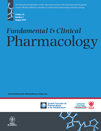Effects of trimetazidine, a partial inhibitor of fatty acid oxidation, on ventricular function and survival after myocardial infarction and reperfusion in the rat
Abstract
Trimetazidine (TMZ), a partial inhibitor of fatty acid oxidation, has been effective in treating chronic angina, but its effects on the development of post-myocardial infarction (MI) left ventricular remodeling are not defined. In this study, we tested whether chronic pre-MI administration of TMZ would be beneficial during and after acute MI. Two-hundred male Wistar rats were studied in four groups: sham + TMZ diet (n = 20), sham + control diet (n = 20), MI + TMZ diet (n = 80), and MI + control diet (n = 80) splitted into one short-term and one long-term experiments. Sham surgery consisted of a thoracotomy without coronary ligation. MI was induced by coronary occlusion followed by reperfusion. Left ventricle (LV) function and remodeling were assessed by serial echocardiography throughout a 24-week post-MI period. LV remodeling was also assessed by quantitative histological analysis of post-MI scar formation at 24 weeks post-MI. During the short-term experiment, 10/80 rats died after MI, with no difference between groups (MI + control = 7/40, MI + TMZ = 3/40, P = 0.3). In the long-term experiment, the deaths occurred irregularly over the 24 weeks with no difference between groups (MI + control = 16% mortality, MI + TMZ = 17%, P = 0.8). There was no difference between groups as regard to LV ejection fraction (MI + control = 36 ± 13%, MI + TMZ = 35 ± 13%, P = 0.6). In this experimental model, TMZ had no effects on the post-MI occurrence of LV dysfunction or remodeling. Further investigations are warranted to assess whether the partial inhibition of fatty acid oxidation may limit the ability of the heart to respond to acute severe stress.




